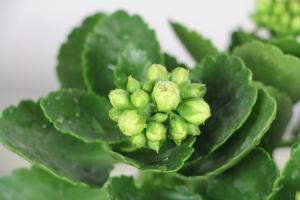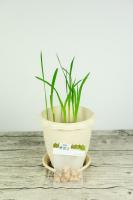How to Protect Young Tomato Plants
Tomatoes are a popular and easy-to-grow home garden crop, but like all plants, they require special care in their early stages of growth. Young tomato plants are particularly vulnerable to pests, diseases, and environmental stressors, so it's important to take steps to protect them. Here are some tips for safeguarding your young tomato plants:
Starting Seeds Indoors
One of the best ways to give your young tomato plants a head start is to start seeds indoors in a warm, protected environment. This ensures that they have the best possible chance of surviving and thriving. When starting tomato seeds indoors, use a good-quality seed-starter mix and keep the soil temperature at a consistent 70-80°F. Provide plenty of light, either natural or artificial, and water regularly, but be careful not to overwater, which can lead to damping-off disease.
Hardening Off
Before planting young tomato plants outdoors, it's important to harden them off gradually to avoid shock. Hardening off involves gradually exposing them to the outdoor environment, starting with short periods of time in a sheltered, partially shaded location and gradually increasing exposure and intensity of light and wind over a period of a week or two. This will help them adjust to the outdoors and prevent transplant shock, which can stunt growth or kill young plants.
Protecting Against Pests and Diseases
Tomatoes can be vulnerable to a range of pests and diseases, such as aphids, tomato hornworms, wilt, and blight. To prevent damage, it's important to keep a close eye on your plants and take action at the first sign of a problem. Regularly inspect your plants for signs of damage, such as holes in leaves or wilting, and use organic methods, such as insecticidal soap or neem oil, to control pests.
Providing Proper Nutrition
Young tomato plants require proper nutrition to grow strong and healthy. Fertilize your plants regularly with a balanced fertilizer that provides essential nutrients, such as nitrogen, phosphorus, and potassium. Too much nitrogen can cause lush foliage but few fruit, so be sure to follow the instructions carefully. You can also apply compost or other organic matter to the soil to improve its health and fertility.
Watering Carefully
Proper watering is crucial for young tomato plants, as they need consistent moisture to grow and develop fruit. However, be careful not to overwater, as this can lead to root rot or other problems. Water deeply and infrequently, and avoid getting the foliage too wet, as this can spread diseases. Mulching around the base of plants can help retain moisture and prevent weeds.
Conclusion
By following these tips, you can give your young tomato plants the best possible chance of survival and success in your home garden. With the right care and attention, you'll soon be enjoying the bountiful harvest of delicious, homegrown tomatoes.

 how many times do yo...
how many times do yo... how many planted tre...
how many planted tre... how many pine trees ...
how many pine trees ... how many pecan trees...
how many pecan trees... how many plants comp...
how many plants comp... how many plants can ...
how many plants can ... how many plants and ...
how many plants and ... how many pepper plan...
how many pepper plan...































